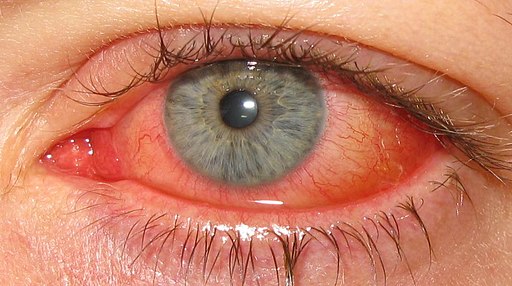You may have heard of rosacea. It is a skin disease that causes your face to be red and sometimes red bumps. Sometimes it affects your eyes and eyelids. It causes the eyes to burn and feel like you have sand in your eyes. Sometimes the eyes will swell. The oily glands on the eyelids get clogged, which blocks the oil from lubricating the eyes, thus causing extremely dry eyes. The clogged glands can also cause a stye to develop. This is called ocular rosacea. Ocular rosacea is a chronic disease that is not curable.
This article will discuss treatments that can reduce your symptoms. Learning your triggers and how to avoid them is an educational process.
Symptoms of ocular rosacea
Ocular rosacea can affect anyone. Some groups are more susceptible than others. It usually affects people between the ages of 30 and 50. Women are affected more than men. Light-skinned people are affected more than dark-skinned. People of Western Europe, especially England and Scotland, are more prone to rosacea. It is estimated that 5% of people have some form of rosacea. People who blush easily have a higher risk of developing ocular rosacea. Symptoms include:
- Inflamed or swollen eyelids
- Swelling around the eyes
- Discoloration or redness around the eyes
- Itchy eyes
- Burning
- Bloodshot eyes
- Dry eye or watery eyes
- Crust on eyelashes
- Frequent styes
- Light sensitivity
- Blurred vision
- Feeling of sand in eyes
What causes rosacea?
Doctors don’t know what causes rosacea. It could be genetic, environmental, and even possibly related to the Helicobacter pylori (H pylori) bacteria. H pylori is an infection in the stomach. It could be a problem with your circulation, making the blood vessels swell. Some environmental causes could be sunburn, exposure to UV light from the sun, or tanning beds. Stress will often cause rosacea to flare up as well as extreme heat or cold. One area that we often don’t want to think about is eyelash mites.
Who to see to be diagnosed?
If your face is often red for no reason or any of the above symptoms, see your dermatologist if you think you have rosacea on your skin. If you have rosacea and you are having ocular rosacea symptoms as stated above, see your optometrist. They may refer you to an ophthalmologist. There are no tests that can diagnose rosacea. Be sure to tell your doctor about your symptoms, especially those that come and go.
Triggers
Triggers are different for each person. The key is to learn what your triggers are and avoid them. Spicy foods and alcohol are the biggest triggers. You may find that some of the following may not affect you, but others do. You might want to keep a diary to identify your triggers. Some common triggers are:

- Spicy food
- Drinking alcoholic beverages
- Sun exposure
- Stress
- Sleep deprivation
- Hot showers, baths, and saunas
- Hot drinks
- Caffeine
- Chocolate
- Dairy
- Extreme heat and cold
- Extreme exercising
- Some drugs dilate blood vessels.
Treatment for Ocular Rosacea
There is no cure for ocular rosacea, but there are things you can do to manage your symptoms. The first thing is to learn what your triggers are and avoid them. Below is a list of things you can do to manage your symptoms.
- A warm compress on your eyes first thing in the morning and before you go to bed. The warm compress softens the crust on the eyelids/lashes and helps activate the oil glands in the eyelids. Depending on the severity of your symptoms, you may want to do this daily or three times a week.
- Clean your eyelids and eyelashes daily with a gentle pH-balanced cleanser. Baby shampoo is effective. You can also buy other eye cleansers over the counter. Use disposable cotton rounds that are used for removing makeup. They are great for cleaning the eyelids. Use one for each eye, so you don’t cross-contaminate an infection from one eye to another.
- Artificial tears that contain lipids. The single-dose eye drops don’t have preservatives in them. Sometimes the preservatives in the bottles cause allergic reactions for some people.
- If the artificial tears are ineffective, you can talk to your optometrist about getting serum tears. Serum tears are made from your blood. They are not FDA-approved, and your insurance probably doesn’t cover them. If the artificial tears don’t work, this may be an option for you.
- Wear sunglasses when out in the sun. Sunglasses that block the UV rays are the best.
- Fish oil or flaxseed oil supplements may be helpful.
- Give your eyes a break every 20-30 minutes from the screens throughout the day.
You may want to check into Intense Pulsed Light Therapy (IPL) if nothing seems to bring relief.
Conclusion
See your optometrist if you are experiencing extreme dry eye conditions, burning, or feeling like sand in the eye. If you have facial rosacea, you may have ocular rosacea. Know your trigger points and avoid them as much as possible. See your doctor for the best treatment for you.
Featured Image Marco Mayer, CC BY-SA 4.0 via Wikimedia Commons
